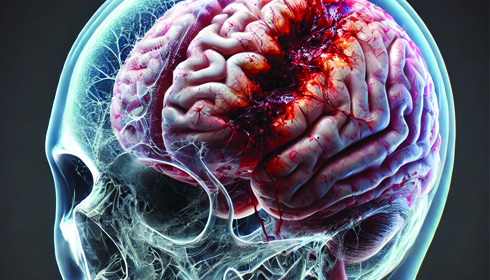
Disrupted Protein Clearance After TBI Tied to Alzheimer’s: New Research Examined
A recent study led by researchers at The Ohio State University has uncovered significant insights into the molecular relationship between traumatic brain injury (TBI) and the increased risk of Alzheimer’s disease (AD). The findings, published in Acta Neuropathologica, suggest that TBI disrupts protein clearance mechanisms, specifically through the downregulation of the BAG3 protein. This impairment contributes to the accumulation of tau proteins, a hallmark of Alzheimer’s pathology, in the brain.
BAG3 is a crucial protein involved in the autophagy-lysosome pathway, a process essential for clearing damaged proteins from cells. In their study, researchers observed that TBI led to reduced levels of BAG3, which in turn caused a buildup of hyperphosphorylated tau, a toxic form of the protein linked to neurodegenerative diseases. The downregulation of BAG3 was seen not only in mouse models but also in human brain tissue with a history of TBI. This discovery provides a clearer picture of how TBIs may contribute to long-term cognitive impairments and the development of Alzheimer’s disease.
Hongjun “Harry” Fu, PhD, senior author of the study, emphasized the broader implications of the research. “Because of the prevalence of both TBI and Alzheimer’s in humans, understanding the molecular mechanism that underlies the transition from TBI to Alzheimer’s is vital to developing future therapies that reduce this risk,” he said.
In an effort to counteract the tau accumulation, the researchers employed an innovative approach by overexpressing BAG3 in neurons. This method successfully reduced tau buildup and improved cognitive function in the experimental models. This finding opens the door to potential therapies aimed at preventing Alzheimer’s disease in individuals who have suffered TBIs. Nicholas Sweeney, the study’s first author, noted, “Targeting neuronal BAG3 may be a therapeutic strategy for preventing or reducing Alzheimer’s disease-like pathology.”
While the study provides a promising avenue for future treatments, it raises questions about the broader applicability of BAG3-targeted therapies. The current research is primarily based on animal models, and the potential translation of these findings to human treatments remains uncertain. Further studies are needed to assess whether enhancing BAG3 expression in humans can safely and effectively mitigate the cognitive impairments observed after TBI.
The researchers also plan to validate these findings using the CHIMERA (Closed Head Induced Model of Engineered Rotational Acceleration), a more refined model of TBI that mimics the types of injuries commonly sustained by humans. This is a critical step, as animal models can only approximate the complex nature of human brain injuries. The team aims to explore how BAG3 interacts with tau pathology, gliosis, and neurodegeneration in this new model.
Although the study provides valuable insights, it should be approached with caution. The biological mechanisms connecting TBI and Alzheimer’s are complex and multifactorial, and BAG3 may represent only one piece of the puzzle. As Fu pointed out, “Completion of future studies will allow us to further understand how TBI and Alzheimer’s are biologically linked and develop novel therapies that can reduce the risk of developing Alzheimer’s after TBI.”
The research from Ohio State University marks an important step toward understanding the molecular mechanisms that link TBI to Alzheimer’s disease. The discovery of BAG3’s role in protein clearance and its potential therapeutic value is significant, yet it underscores the need for further investigation. As scientists continue to explore the intricate relationship between TBI and neurodegenerative diseases, the ultimate goal remains the development of effective therapies that can mitigate long-term cognitive risks associated with brain injuries.